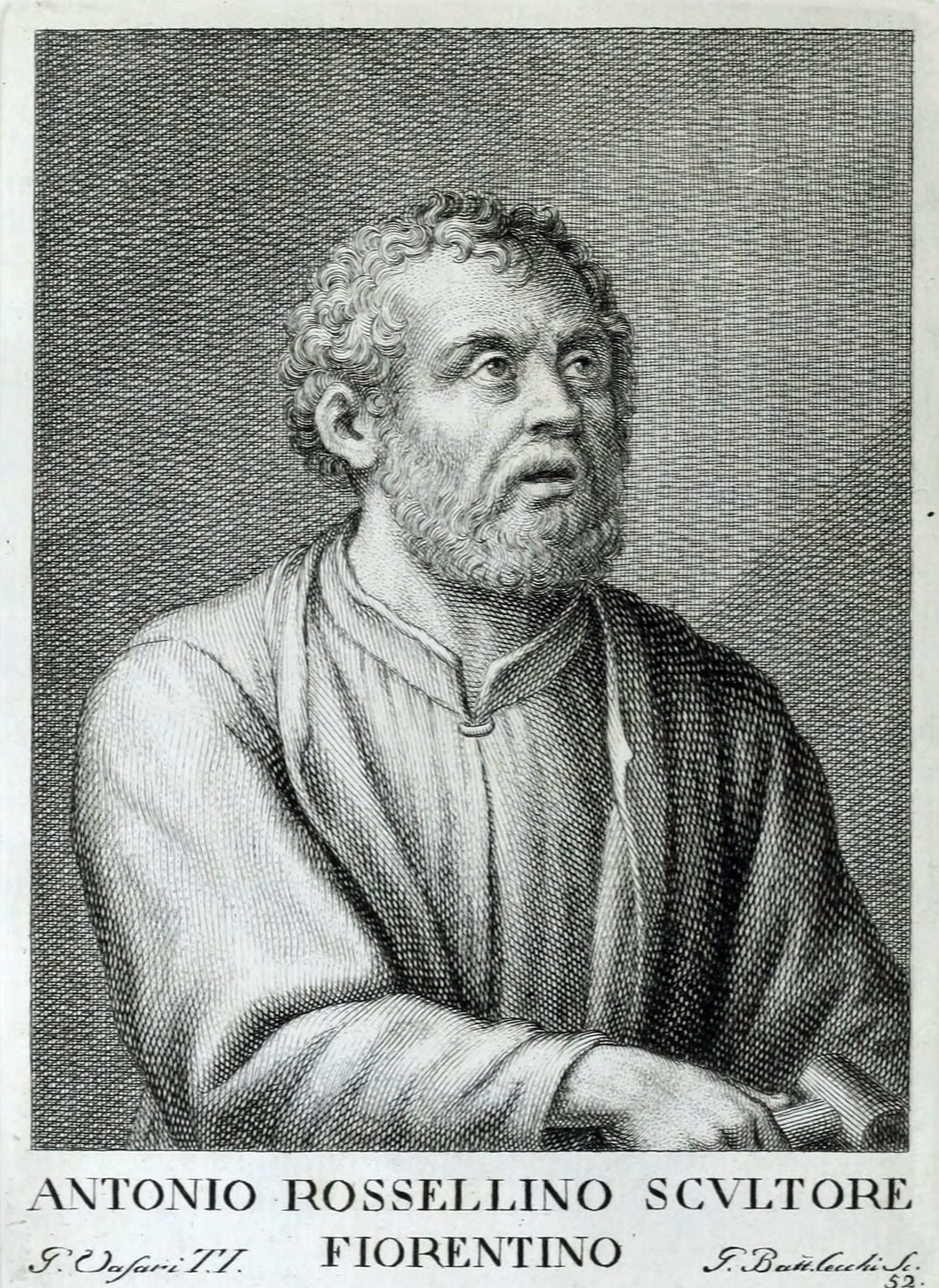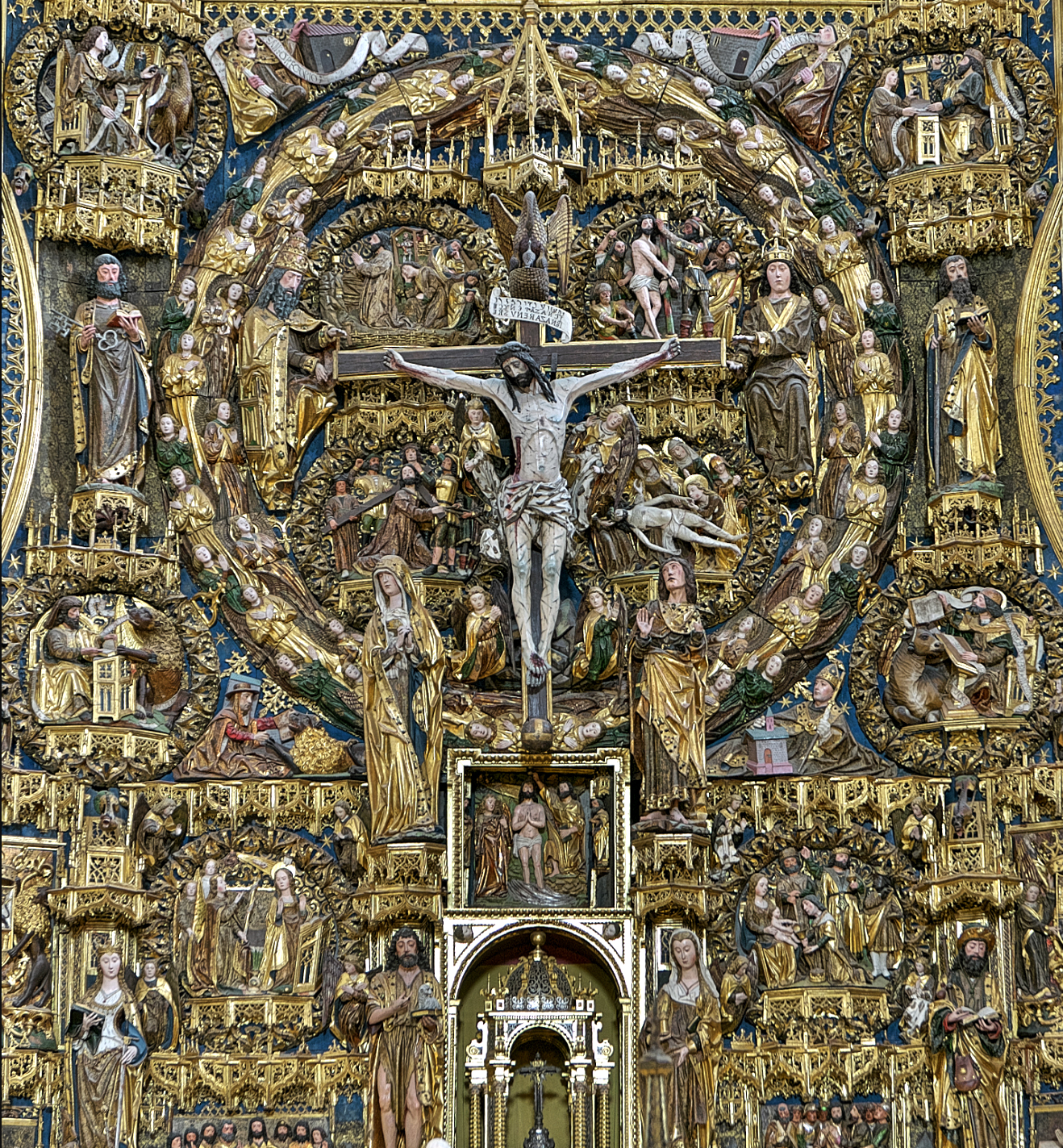|
San Francesco (Prato)
San Francesco is a Gothic-style, Roman Catholic church located in front of the square named after the church, in the historic center of Prato, region of Tuscany, Italy. San Francesco’s church, in the homonym square (XII–XIV sec.), it is located in the nucleus of the Oldest City of Prato and an Important Place of Catholic worship and one of the first Franciscan Churches with his big convent built on the ground that was donated by the municipality to the friars minor only eight days after the canonization of the saint, in 1228. History and architecture Construction of the monastery on land donated to the friars minor began a few days after the canonization of the saint in 1228; construction of the present church began in 1281, next to the oratory of the monastery. The church was finished in 1331, among the first buildings in Prato built in brickwork instead of stone. The façade is divided in bichrome stripes in alberese and serpentinite with a central portal, and ends with a ... [...More Info...] [...Related Items...] OR: [Wikipedia] [Google] [Baidu] |
Prato
Prato ( , ) is a city and ''comune'' in Tuscany, Italy, the capital of the Province of Prato. The city lies in the north east of Tuscany, at the foot of Monte Retaia, elevation , the last peak in the Calvana chain. With more than 200,000 inhabitants, Prato is Tuscany's second largest city (after Florence) and the third largest in Central Italy (after Rome and Florence). Historically, Prato's economy has been based on the textile industry and its district is the largest in Europe. The textile district of Prato is made up of about 7000 fashion companies, obtaining around 2 billion euros from exports. The renowned Datini archives are a significant collection of late medieval documents concerning economic and trade history, produced between 1363 and 1410. The city boasts important historical and artistic attractions, with a cultural span that started with the Etruscans and then expanded in the Middle Ages and reached its peak with the Renaissance, when artists such as Donatell ... [...More Info...] [...Related Items...] OR: [Wikipedia] [Google] [Baidu] |
Antonio Rossellino
Antonio Gamberelli (1427–1479), Janson, H.W. (1995) ''History of Art''. 5th edn. Revised and expanded by Anthony F. Janson. London: Thames & Hudson, p. 465. nicknamed Antonio Rossellino for the colour of his hair, was an Italian Renaissance sculptor. His older brother, from whom he received his formal training, was the sculptor and architect Bernardo Rossellino. Born in Settignano, now a part of Florence, he was the youngest of five brothers, sculptors and stonecutters. He is said to have studied under Donatello and is remarkable for the sharpness and fineness of his bas-relief. His most important works are the funeral monument of (1458) for the Blackfriar Church (today a museum), Forlì, and the monument of Infante James of Coimbra, cardinal of Portugal in the Basilica di San Miniato al Monte, Florence (1461–1467). The portrait bust of Matteo Palmieri in the Bargello is signed and dated 1468. In 1470 he made the monument for Maria d'Aragona Duchess of Amalfi,This Maria ... [...More Info...] [...Related Items...] OR: [Wikipedia] [Google] [Baidu] |
Giotto
Giotto di Bondone (; – January 8, 1337), known mononymously as Giotto ( , ) and Latinised as Giottus, was an Italian painter and architect from Florence during the Late Middle Ages. He worked during the Gothic/Proto-Renaissance period. Giotto's contemporary, the banker and chronicler Giovanni Villani, wrote that Giotto was "the most sovereign master of painting in his time, who drew all his figures and their postures according to nature" and of his publicly recognized "talent and excellence".Bartlett, Kenneth R. (1992). ''The Civilization of the Italian Renaissance''. Toronto: D.C. Heath and Company. (Paperback). p. 37. Giorgio Vasari described Giotto as making a decisive break with the prevalent Byzantine style and as initiating "the great art of painting as we know it today, introducing the technique of drawing accurately from life, which had been neglected for more than two hundred years".Giorgio Vasari, ''Lives of the Artists'', trans. George Bull, Penguin Classics, (196 ... [...More Info...] [...Related Items...] OR: [Wikipedia] [Google] [Baidu] |
Niccolò Gerini
Niccolò is an Italian male given name, derived from the Greek Nikolaos meaning "Victor of people" or "People's champion". There are several male variations of the name: Nicolò, Niccolò, Nicolas, and Nicola. The female equivalent is Nicole. The female diminutive Nicoletta is used although seldom. Rarely, the letter "C" can be followed by a "H" (ex. Nicholas). As the letter "K" is not part of the Italian alphabet, versions where "C" is replaced by "K" are even rarer. People with the name include: In literature: * Niccolò Ammaniti, Italian writer * Niccolò Machiavelli, political philosopher, musician, poet, and romantic comedic playwright * Niccolò Massa, Italian anatomist who wrote an early anatomy text ''Anatomiae Libri Introductorius'' in 1536 In music: * Niccolò Castiglioni, Italian composer and pianist * Niccolò da Perugia, Italian composer of the trecento * Niccolò Jommelli, Italian composer * Niccolò Paganini, Italian violinist, violist, guitarist and composer * N ... [...More Info...] [...Related Items...] OR: [Wikipedia] [Google] [Baidu] |
Cappella Migliorati 01
{{disambiguation, surname ...
Cappella may refer to: * Cappella (band), Italian electronic music group * a cappella, unaccompanied singing People with the surname * Felix Cappella (1930-2011), Canadian race walker * Scipione Cappella (fl. 18th century), Italian painter See also * A cappella (other), including "A Cappella" * Capella (other) * Capela (other) Capela may refer to: Places *Capela (Penafiel), a parish in Penafiel Municipality, Portugal * Capela, Sergipe, a municipality in the Brazilian state of Sergipe * Capela, Alagoas, a municipality in the Brazilian state of Alagoas * Capela, Râmni ... [...More Info...] [...Related Items...] OR: [Wikipedia] [Google] [Baidu] |
Ionic Column
The Ionic order is one of the three canonic orders of classical architecture, the other two being the Doric and the Corinthian. There are two lesser orders: the Tuscan (a plainer Doric), and the rich variant of Corinthian called the composite order. Of the three classical canonic orders, the Corinthian order has the narrowest columns, followed by the Ionic order, with the Doric order having the widest columns. The Ionic capital is characterized by the use of volutes. The Ionic columns normally stand on a base which separates the shaft of the column from the stylobate or platform while the cap is usually enriched with egg-and-dart. The ancient architect and architectural historian Vitruvius associates the Ionic with feminine proportions (the Doric representing the masculine). Description Capital The major features of the Ionic order are the volutes of its capital, which have been the subject of much theoretical and practical discourse, based on a brief and obscure passage in ... [...More Info...] [...Related Items...] OR: [Wikipedia] [Google] [Baidu] |
Tabernacle
According to the Hebrew Bible, the tabernacle ( he, מִשְׁכַּן, mīškān, residence, dwelling place), also known as the Tent of the Congregation ( he, link=no, אֹהֶל מוֹעֵד, ’ōhel mō‘ēḏ, also Tent of Meeting, etc.), was the portable earthly dwelling place of Yahweh (the God of Israel) used by the Israelites from the Exodus until the conquest of Canaan. Moses was instructed at Mount Sinai to construct and transport the tabernacle with the Israelites on their journey through the wilderness and their subsequent conquest of the Promised Land. After 440 years, Solomon's Temple in Jerusalem superseded it as the dwelling-place of God. The main source describing the tabernacle is the biblical Book of Exodus, specifically Exodus 25–31 and 35–40. Those passages describe an inner sanctuary, the Holy of Holies, created by the veil suspended by four pillars. This sanctuary contained the Ark of the Covenant, with its cherubim-covered mercy seat. An outer sanct ... [...More Info...] [...Related Items...] OR: [Wikipedia] [Google] [Baidu] |
Gothic Sculpture
Gothic sculpture was a sculpture style that flourished in Europe during the Middle Ages, from about mid-12th century to the 16th century,The chronology of the period varies significantly according to the source consulted evolving from Romanesque art, Romanesque sculpture and dissolving into Sculpture in the Renaissance period, Renaissance sculpture and Mannerism."Gothic art" In: '':pt:Encyclopædia_Britannica, Encyclopædia Britannica Online'' When the Classicism, classical values started to be appreciated again in the Renaissance, the sculpture from the previous centuries was seen as shapeless and rough and was given the name of Gothic, since it was believed to come from the culture of the Goths, people considered barbaric and supposedly responsible for the disappearance of the Roman Empire. [...More Info...] [...Related Items...] OR: [Wikipedia] [Google] [Baidu] |
Niccolò Di Pietro Lamberti
Niccolò is an Italian male given name, derived from the Greek Nikolaos meaning "Victor of people" or "People's champion". There are several male variations of the name: Nicolò, Niccolò, Nicolas, and Nicola. The female equivalent is Nicole. The female diminutive Nicoletta is used although seldom. Rarely, the letter "C" can be followed by a "H" (ex. Nicholas). As the letter "K" is not part of the Italian alphabet, versions where "C" is replaced by "K" are even rarer. People with the name include: In literature: * Niccolò Ammaniti, Italian writer * Niccolò Machiavelli, political philosopher, musician, poet, and romantic comedic playwright * Niccolò Massa, Italian anatomist who wrote an early anatomy text ''Anatomiae Libri Introductorius'' in 1536 In music: * Niccolò Castiglioni, Italian composer and pianist * Niccolò da Perugia, Italian composer of the trecento * Niccolò Jommelli, Italian composer * Niccolò Paganini, Italian violinist, violist, guitarist and composer * Ni ... [...More Info...] [...Related Items...] OR: [Wikipedia] [Google] [Baidu] |



_(14781191601).jpg)
